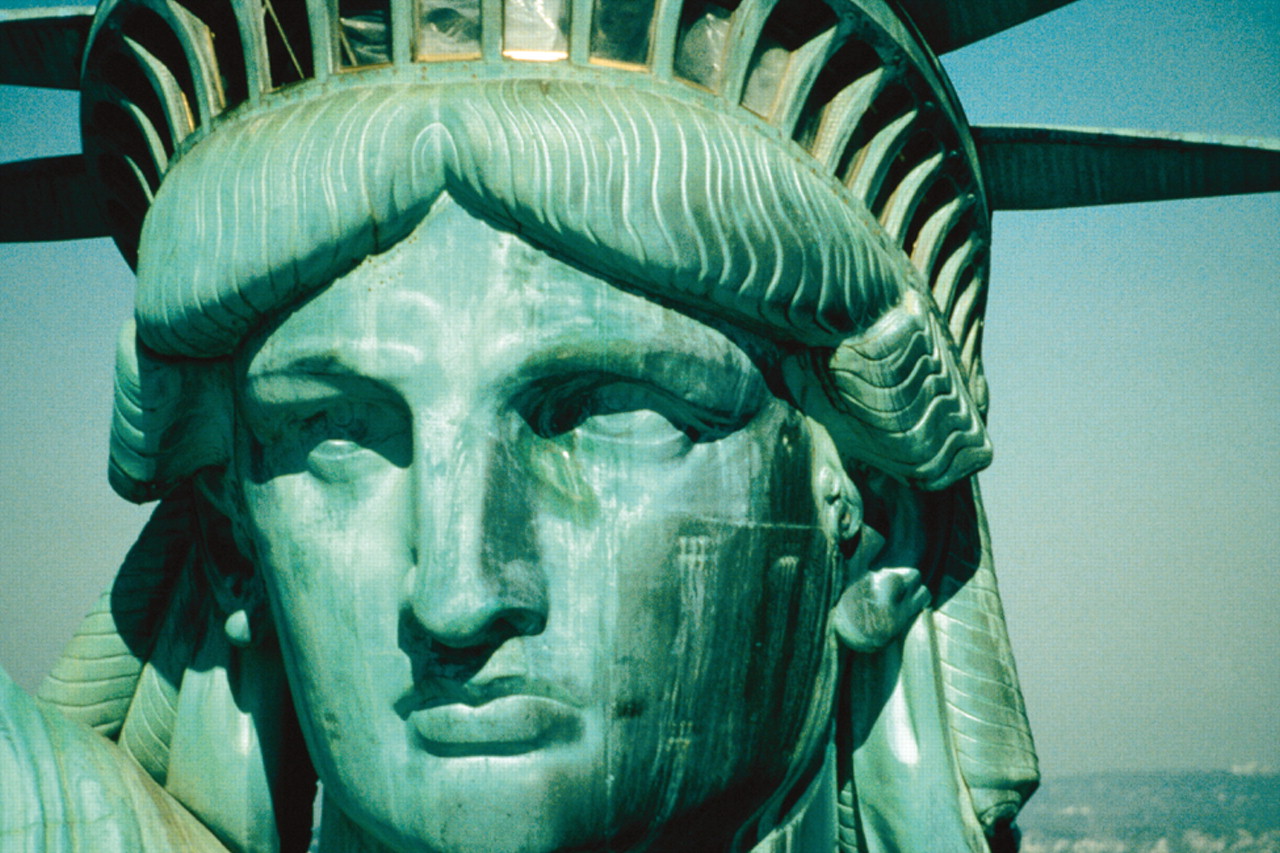Visit the Lady Who Carries a Torch
 For more than a century, Lady Liberty has guided the way to freedom and opportunity for countless numbers of immigrants from all corners of the globe. And although post-September 11, 2001, security concerns have prevented tourists from making the hallowed trip to her crown, nothing can quell the ideals she represents.
For more than a century, Lady Liberty has guided the way to freedom and opportunity for countless numbers of immigrants from all corners of the globe. And although post-September 11, 2001, security concerns have prevented tourists from making the hallowed trip to her crown, nothing can quell the ideals she represents.

Frédéric-Auguste Bartholdi, a French sculptor, designed the statue with the help of engineer Alexandre Gustave Eiffel, who is best known for designing the Eiffel Tower.
Exactly who served as Bartholdi’s model for the statue remains unknown to this day; some have said it was his mother, Charlotte. Others, however, have noted similarities in the design Bartholdi drew up for a sculpture that never came to be—a robed Egyptian peasant holding a torch—but he later denied any association between the two.
Bartholdi relied on lotteries and public fees to build the gargantuan steel and copper statue, which he completed in France in July 1884. Lady Liberty left France on a ship bound for America in more than 300 pieces and arrived in June 1885. The statue was reconstructed in four months, in October 1886. After Americans completed the granite pedestal for the statue, the dedication took place.
The Statue of Liberty stands within what used to be the confines of Fort Hood on Bedloe’s Island in New York Harbor. President Calvin Coolidge declared the statue a national monument in 1924, and Bedloe’s Island was renamed Liberty Island in 1956. A decade later, nearby Ellis Island became part of the Statue of Liberty National Monument. While Liberty Island is located in the Upper Bay of New York Harbor, geographically it sits in the territorial waters of New Jersey, three-eighths of a mile offshore from Jersey City.
In the 1980s, a $150 million restoration project helped to repair some of the damage to Lady Liberty wrought by a century of sea air and rain. The project was completed by 1986, in time for her centennial anniversary celebration.
Although it’s possible to get a good view of the Statue of Liberty from Battery Park in Manhattan, only a trip to Liberty Island can give tourists an idea of the statue’s magnitude and detail.
From foot to torch, Lady Liberty stands 151 feet tall and weighs 54 million pounds.
According to the National Park Service, the 25 windows in her crown represent the gemstones of the earth, and the seven rays of her crown represent the seven seas and continents of the world.
Although visitors used to be able to climb the 192 steps to the top of the pedestal—or the more ambitious the 354 steps to reach her crown—the inside of the statue has been closed to tourists indefinitely following the September 11 terrorist attacks. In addition, the Statue of Liberty museum is closed. However, those who want a souvenir from their trip are free to browse the gift shop directly behind the statue. There is also a cafeteria open to the public.
Depending on staffing, park rangers give guided tours of the statue and its grounds out of the Liberty Island information center; tours are offered daily on a first-come, first-served basis.
The Circle-Line Ferry shuttles tourists back and forth to Liberty and Ellis islands from Battery Park in Manhattan and Liberty State Park in Jersey City, N.J., beginning at 9:30 a.m. daily. Ferries run every half hour, and one ticket will take visitors to both islands—Ellis Island is home to the renowned Immigration Museum. The cost is $10 for visitors aged 13 and older, $8 for adults aged 62 and older, and $4 for children under the age of 13.
Tickets can be purchased in person at Castle Clinton National Monument in Battery Park and inside the Railroad Terminal in Liberty State Park, Jersey City. They can also be purchased online at www.circleline.com or by phone at (800) 600-1600. More information about the Statue of Liberty is posted online at www.nps.gov/stli. ▪



